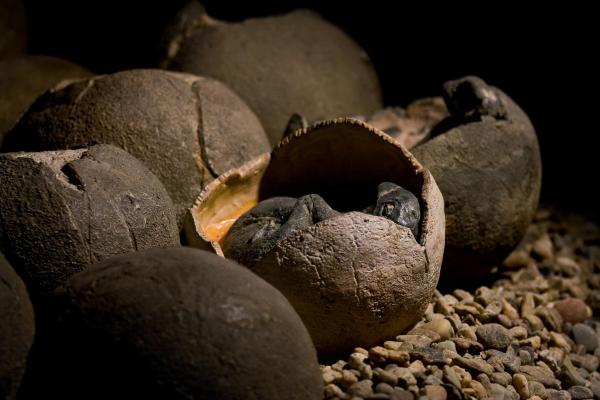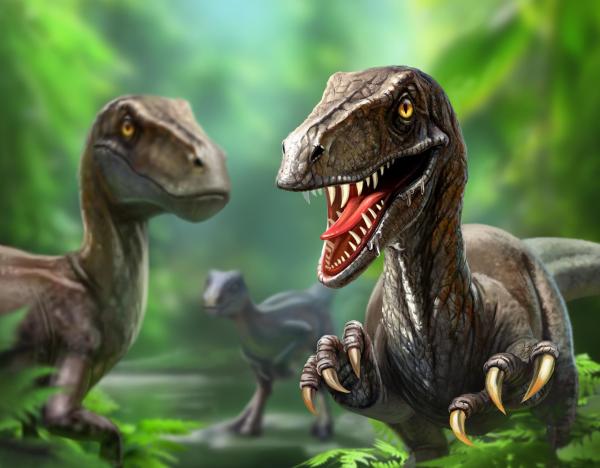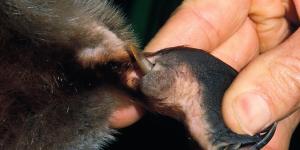How Did Dinosaurs Reproduce?


Dinosaurs have captivated scientists and enthusiasts for a considerable time, and one of the most intriguing aspects of their existence is their reproductive process. Although direct observation of dinosaur breeding is impossible, paleontologists have gleaned insights into their behavior from fossil studies. Dinosaurs were a diverse group of reptiles that lived on Earth for around 160 million years. They laid eggs, similar to modern-day birds and reptiles, and there is evidence to suggest that they exhibited a variety of reproductive strategies.
In this article from thedailyECO, we will delve into the fascinating world of dinosaur reproduction and explore other distinctive characteristics of these ancient creatures.
What were dinosaurs?
Dinosaurs belong to the Sauropsida class, which includes most reptiles and birds. Their origin is still being studied, but they emerged during the Triassic period, dating between 231 and 243 million years ago.
Dinosaurs thrived on Earth for a significant period during the Mesozoic era, diversifying into a range of shapes and sizes, and occupying various ecological niches. They are known for their distinct features, including:
- Bipedalism: many dinosaur species walked on two legs, with their hind limbs supporting their weight. This allowed them to move more efficiently and free up their forelimbs for other purposes.
- Scaled skin: dinosaurs had scaly skin, similar to modern-day reptiles. However, some species, such as the stegosaurus, had bony plates on their skin for protection.
- Teeth: most dinosaurs had teeth that were adapted to their specific diet, whether it was herbivorous, carnivorous, or omnivorous.
- Size: dinosaurs ranged in size from small, bird-sized creatures to massive giants like the sauropods, which could weigh up to 100 tons.
- Air-filled bones: many dinosaurs had bones that were filled with air pockets, which made them lighter and easier to move. This feature is also found in modern-day birds, which are the closest living relatives of dinosaurs.
- Feathers: while not all dinosaurs had feathers, some species did, such as the Velociraptor and Archaeopteryx. This indicates that feathers may have evolved in dinosaurs for reasons other than flight, such as insulation or display.
- Complex social behavior: some dinosaurs, such as the horned dinosaur Triceratops, may have lived in groups and exhibited complex social behavior, similar to modern-day animals like elephants or primates.
- Extinction: despite their long reign on Earth, dinosaurs went extinct around 66 million years ago, likely due to a catastrophic event, such as a meteor impact.
Dinosaurs are also divided into two main groups based on the structure of their hip bones: the Saurischia (lizard-hipped) and the Ornithischia (bird-hipped). These groups differ in their skeletal structures and evolutionary history.
Do no miss this other article, where we explain how many types of dinosaurs existed.

How did dinosaurs reproduce?
Paleontologists have studied dinosaur fossils extensively to understand how these ancient creatures reproduced. Based on the available evidence, it is believed that dinosaurs laid eggs to reproduce, much like modern-day reptiles and birds.
Some species of dinosaurs laid their eggs in nests, while others buried them in the ground. Some dinosaurs, like the oviraptor, may have even brooded their eggs, sitting on them to keep them warm until they hatched. In some cases, dinosaur nests have been found with fossilized embryos inside, providing further evidence of egg-laying. Evidence also suggests that some species, like the long-necked sauropods, engaged in communal nesting, with multiple females laying their eggs in the same location.
Male and female dinosaurs likely engaged in courtship rituals, similar to many animals today, to select mates. Some species had features like horns and crests, used to attract mates and establish social hierarchies among males, as in the case of ceratopsids. Other species, such as those within the theropod group, are believed to have used vocalizations to attract mates.
Since both male and female reproductive organs of dinosaurs were made of soft tissues that do not typically fossilize, scientists have had to rely on educated guesses by examining the anatomy of modern-day dinosaurs' close relatives. We will delve into the issue in the following section.
How did dinosaurs mate?
Determining the sex of dinosaurs can be challenging as many males and females appeared to be similar in size. It is not a matter of a smaller dinosaur mounting a larger one or vice versa. However, recent scientific research has identified some female dinosaur specimens through the analysis of medullary bones, which decrease in mass when eggs are created within the body.
Birds and crocodiles use a reproductive organ known as the cloaca, which serves as an all-purpose opening for urination, defecation, and reproduction. In the case of birds, they engage in a process called the "cloacal kiss" during breeding, where the male and female press their cloacas together, allowing sperm to pass from the male's cloaca into the female's, resulting in fertilization. Dinosaurs, being closely related to birds, are thought to have used a similar method for reproduction and may not have required external genitalia.
In order to gain a more complete understanding of how dinosaurs reproduced, scientists will need to continue to study fossil evidence and make use of new technologies and techniques. This ongoing research will likely lead to exciting new discoveries and shed light on one of the most fascinating aspects of dinosaur biology.
How were the eggs of dinosaurs?
Dinosaur eggs came in various shapes, sizes, and textures, depending on the species and the environment in which they were laid. Most dinosaur eggs were comparable in size to ostrich eggs, which are the largest living bird eggs, while others were smaller, similar to chicken eggs. These amniotic eggs with hard shells were typically laid in clutches, in nests or buried in a communal hole, which were often built with vegetation and other materials to provide insulation and protection for the eggs.
Studies have revealed that the general shape and structure of the shell of dinosaur eggs shares common features with those of modern birds. Some dinosaur species, such as the oviraptor, even brooded over their eggs to provide additional warmth and protection during the nesting period.
Thanks to the discovery of fossilized dinosaur eggs, scientists have been able to study the embryonic development of dinosaurs and gain insights into their growth and behavior. These findings have shed light on the reproductive strategies and nesting behaviors of these fascinating creatures.
You might be interested in this other article, where we talk about what is fossilization.

How were dinosaurs born?
Dinosaurs were born after hatching from their eggs. Once the eggs were laid in a nest, they would typically be incubated for a period of time before hatching. The length of the incubation period would have varied depending on the species of dinosaur and environmental conditions.
After hatching, it is believed that baby dinosaurs were completely dependent on their parents or social group for protection, food, and other necessities. Evidence of parental care has been found in certain species, such as the discovery of large footprints surrounding smaller ones with the same shape and herds with traces of younger individuals in the center of the group.
As baby dinosaurs grew and developed, they would undergo various stages before reaching adulthood and becoming independent. However, much about the growth and development of individual dinosaur species remains a subject of active research and investigation. These findings give us insight into the social behavior of dinosaurs and how they cared for their young.
If you want to read similar articles to How Did Dinosaurs Reproduce?, we recommend you visit our Facts about animals category.
- Chiappe, LM, & Coria, RA (2004). “Auca Mahuevo, an extraordinary nesting site for sauropod dinosaurs from the Late Cretaceous, Neuquén, Argentina”.
- Sánchez Pinto Hernández, JC (2019). "Ethology of dinosaurs: evidence of gregariousness".
- Salgado, L. (2007). Sauropod dinosaurs: what we know today about their reproductive biology.







